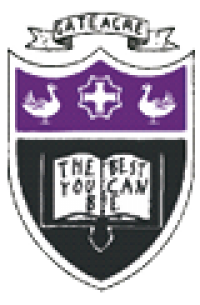Intent, Implementation & Impact
Intent: Our purpose and ambition
It is the intent of the Drama department to ensure that its students acquire the essential educational capital, cultural capital and social capital to which they are entitled. We aim to develop our student’s transferrable skills as well as provide them with the qualifications necessary for their chosen career paths. We aim to expose students to a variety of different performance styles through multiple theatre trips and visiting performances and workshops which will enrich their learning experience.
It is our intent that the skills learned are nurtured and developed throughout the course and students also apply these skills to the theoretical learning covered in lessons. It is also our intent that this knowledge is grounded in the key concepts, big ideas and experimentation of key practitioners in the Drama world and that students can challenge this thinking and apply new ideas of their own.
We believe that demanding and challenging work is an entitlement to all students, rather than something that is an ‘addition’ or an ‘enrichment’. Challenge must not be rationed for a small group of ‘more able’ students. It is our intent to push and challenge all students academically as a matter of course. Access to difficult material will be secured within lessons through talk, scaffolding, modelling, feedback and independent practice. It is our intent that teaching and learning will be routed in the science of learning and evidence informed.
Implementation: Design, Pedagogy and Assessment
Sequencing
The department has put thought and consideration into the order that topics (and lessons within each topic) are taught. Knowledge is delivered and accumulated in a logical, cumulative progression.
Building Blocks
Key strands and recurring themes are identified. The big ideas are made explicit to students and built on what Willingham calls ‘the unifying ideas of each discipline’.
TEEP
All lessons are delivered using the TEEP cycle and the underpinning elements of good instruction. The latest research and principles that form part of the science of learning are bolted on to this model.
Retrieval Practice
Students are given the opportunity to revisit content. Interleaving is used. Dual coding and other strategies are incorporated. Low stakes quizzes and knowledge organisers also assist students.
Differentiation & Challenge
All students are challenged. Differentiation does not take the form of ‘strategic grouping’ alone. Difficult concepts are broken down, scaffolded and modelled according to Rosenshine’s principles.
Assessment & Feedback
Assessment is clearly focused and varies depending on purpose. Assessments are planned to ensure high validity and reliability. They feedback into teaching where appropriate. Feedback is focused.
Literacy & Numeracy
There is a clear focus on learning new concepts. Disciplinary literacy techniques are used to explicitly develop students tier one and tier two vocabulary. Opportunities to develop numeracy are taken.
Cultural Capital and SMSC
Opportunities are planned for within all schemes of work for students to advance their cultural and social capital and develop as individuals on a spiritual and moral level. This is explicit to students.
Linking Curriculum to Careers
Time is given for students to reflect on their potential career options/pathways. Practitioners are invited to do Q&A's with students. Careers are a prominent theme within classroom practice and the classroom environment itself.
IMPACT: Attainment, Progress, Knowledge, Skills and Destinations
The impact of our curriculum will be assessed each year using the different types of data available to us. This data will include exams results analysis, examiners reports, emerging research, QA, student voice, parent voice and staff voice. We also seek to collaborate with colleagues from different centres and keep up to date with the latest studies and contemporary events linked to our subjects. The acquisition of knowledge should be modelled for students by staff.

